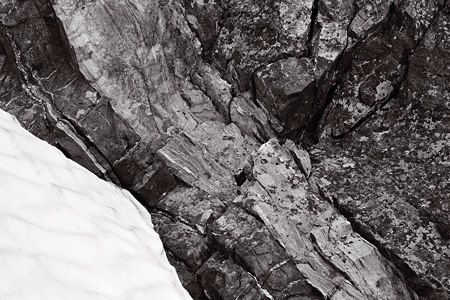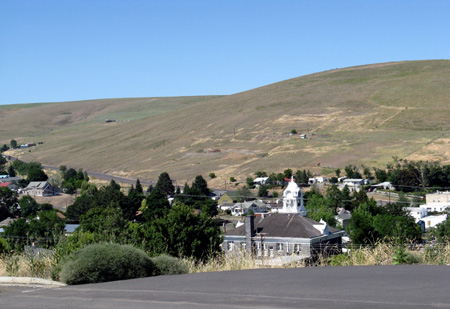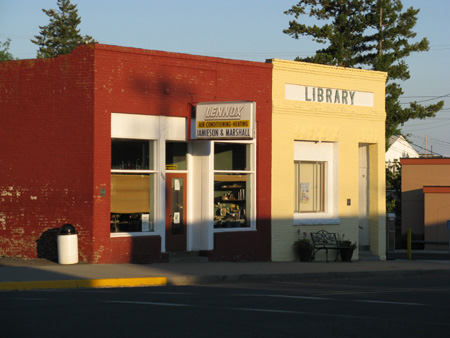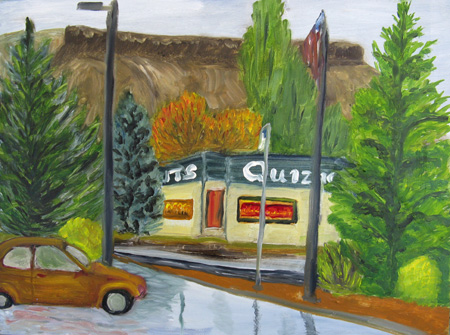Title: Sorrow
Medium: Oil on canvas
Size: 100×60 cm
Archives for being an artist
What do you have to deal with?

To judge from the talks at the opening of a current group exhibit, it is a truth universally acknowledged that a landscape artist working in Montana must deal in some way with the huge volume of imagery and the stereotypical impressions people have of this state. When it comes to notions of what art should be, there may not be much difference between residents and visitors. The standard expectations seem to be of monumental mountainscapes, majestic mammals, or cowboy kitsch.
As a photographer working in black and white–already outside the norm–I am, depending on the photograph, taken to be either just like Ansel Adams or not at all like him. And after that it’s digital or film and do I manipulate the images?
Don’t get me wrong. The questions are not only valid, they’re important ones that I’ve grappled with in my work, as have many others. And I actually enjoy responding to them if I’m talking to someone interested and open-minded. Still, it’s extraordinarily refreshing to discuss with someone free of the usual preconceptions.
Montana and landscape are hardly unique in this regard. What do you have to deal with, either in creating or presenting your art? Is it generally a good or a bad experience for you?
In Retrospect
I’m back from the road trip, muddling about until my body decides it’s home.
Muddling about includes mulling over ideas, thoughts, notions, and niggles that life has handed me. Here’s a set of thoughts that I’ve maundered through in the last few days.
People, making conversation with the plein air worker, often ask “How long have you been painting?” My stock answer is “Oh, about 5 years.”
But I was cleaning up some old piles of stuff today, and ran across a whole covey of watercolors and acrylics that were dated 1999. Now my math is bad, but not that bad. Somehow time, or memory, had gotten short-circuited. I remember the class now; it was “painting the figure in watercolor,” and I stumbled into it by mistake, much, I suspect, to the horror of the very nice instructor.

Rosie, Winter, 1999, watercolor, 15 x 22″
Painting Expedition and Road Trip
I’m on the road with Jer, working on painting scenes from many tiny hamlets in the high desert of eastern Oregon. We started on Monday, it is now Thursday, and I have eight 12 x 16″ plein air oil paintings in my boxes in the back of the Honda. I also have a peeling nose (in spite of all precautions against the sun) and a whole set of images, some photos, some memories, of Oregon’s outback.The paintings are too raw to be shown right now, but here are some photos of things I painted:

The Heppner, Oregon, courthouse and uplands

The Condon Library and Lennox Heating and Cooling Store (circa 1903, erstwhile bank and saloon)
Holding the Knowledge
I have just finished an intensive (and intense) 5-day workshop in plein air landscape painting. Later, I may indulge myself and talk about the entire process and the 3 locations we painted at, but for this post I’d like to pose a question which comes out of just one location. The question I’m posing is how does one transfer the knowledge gained in doing one piece of art to her general practice? More specifically, how can I hang onto the insights that my instructor helped me gain and use them when I’m working on my own?
The specifics: On Wednesday we painted at the Willamette River waterfront, in a piece of waste ground, just to one side of the Interstate 405 (Fremont) Bridge as it rises over the river. One humongous stanchion was no more than 10 feet from my painting spot. The roar of the traffic was absolutely constant; it was only maddening if you tried to talk to someone. The field was dusty but large, the sun quite warm, the wind constant, and although there were city amenities beyond us on all sides, a chain link fence and heavily trafficed road cut us off. It was a total enveloping environment, not necessarily unpleasant if you sank into it.
That was Wednesday. On Thursday and Friday, we moved the art school’s painting studio and worked on projects based on one of the plein air pieces. I chose to enlarge upon images and ideas that I gathered from the Under-the-Underpass experiences.
Fremont Bridge 1, photo, June 2008
Is an Academic Degree really necessary for a real painter?

Looking back through the years, I do not remember when I started painting with oils and watercolors… maybe I was about 13. To be honest mostly of I know today has come from my own experiences of try and error.
To me, making a painting was never an issue but something that happens naturally with whatever materials come to my hands. Oils are my favorites, but recently I’ve been painting in a very quick method and found out that a mixture of acrylics, oils, glitter and others mediums work better for my new style.
In the past 3 years I decided to do a Fine Art degree as a nice “add on” to my previous qualifications. To my disappointment, I have learn nothing new but of a chaotic, hypocrite and delusional world from the Art teachers.
If you an artist with already some success and experience I recommend you to aim higher and not to go back to an educational institution. You see, despite your good intentions you setting yourself back and giving your own murder sentence to the chances of being ‘stepped on’ and muffled by the tutors, who also called themselves artists. You must have no previous artistic experience because no matter how you try to please and befriend this so called “artist teachers” you will always be seen as a threat rather than a student.
Unfortunately we live in a world that demands all this qualifications to be taken seriously. I have learned from my own mistakes, maybe because I was a bit naïve, full of dreams and hopes that a new qualification would push my career further, but realize that I brought this to myself to the point I had nothing but verbal abuse, bullying, harassment, intimidation and discrimination from lecturers. In the end I felt from as high I dreamed and have gain nothing but a new pretty BA words in my cv and an awful demoralizing experience I must rather forget!

More new painting in my redesigned website www.magicpaintings.com
Collegiality and Independence: Ruminations on being a visual artist
The other day I was turned down as an applicant to a local art co-op. I was applying as a painter, not a textile artist, had made the first cut, and was asked in for an interview. After the interview, the group decided I should “try again next year.”
Aside from the obvious reasons for the rejection (the quality of the work itself and splits of taste within the co-op group), I realized that I had gone to the interview unprepared for what I found.
The Co-op saw the interview as an application for an exhibit or a job; I saw it as an act of collegiality and a conversation.
Here’s a review of the process and my thinking about it.
I was told to bring some of my “most recent work” (which I interpreted as “most raw”), so I pulled out a pleine aire, a few days old.

Quiznos Subs, Prineville, Oregon
